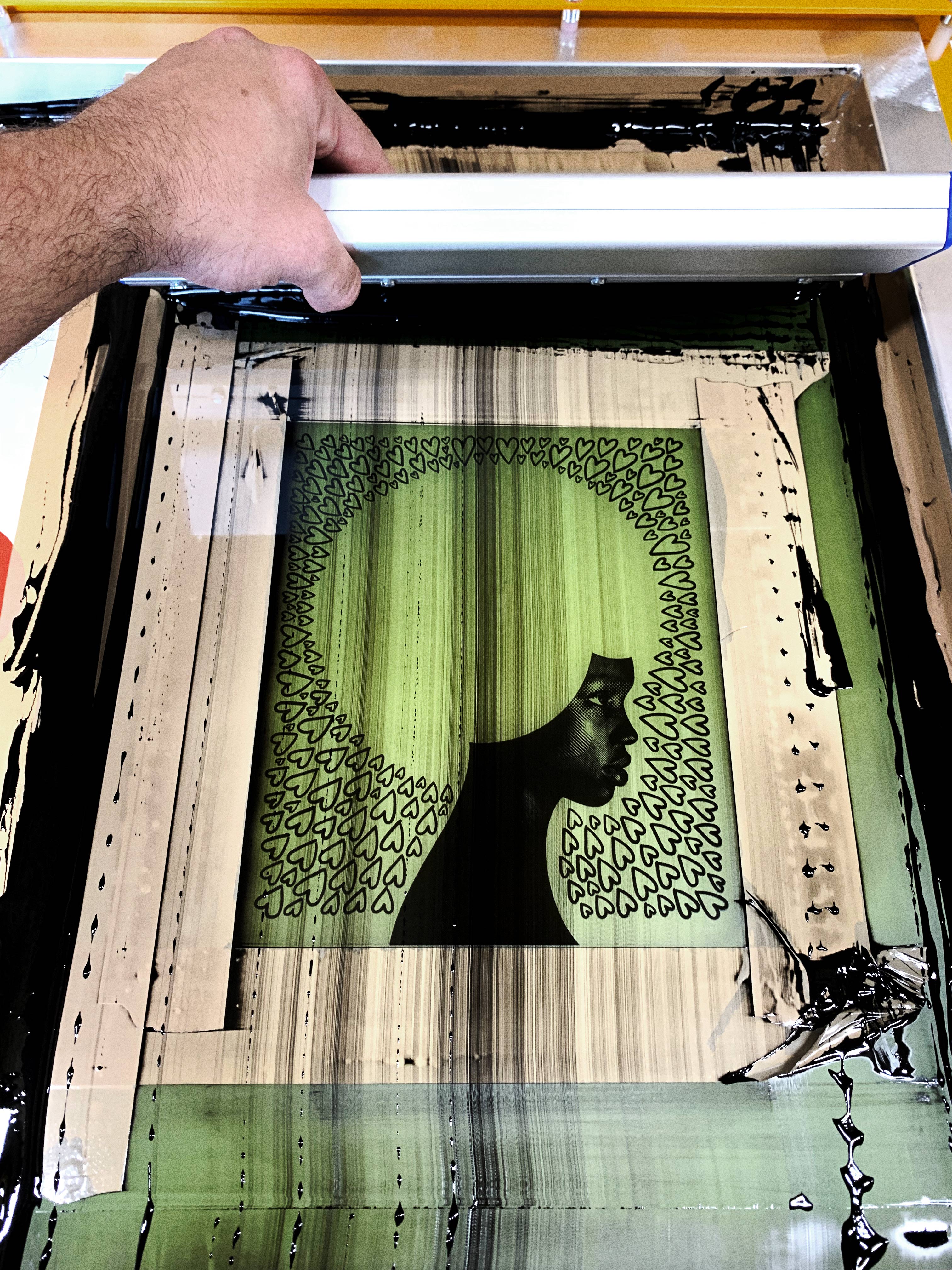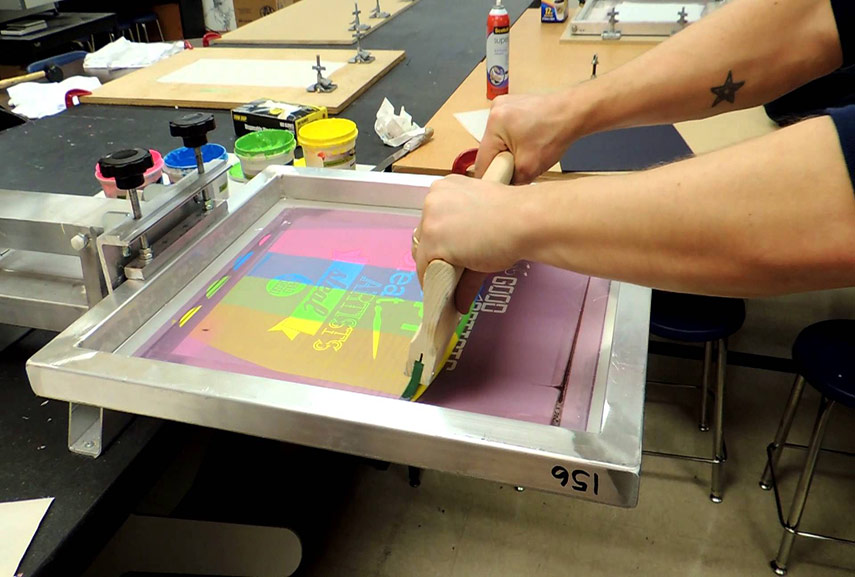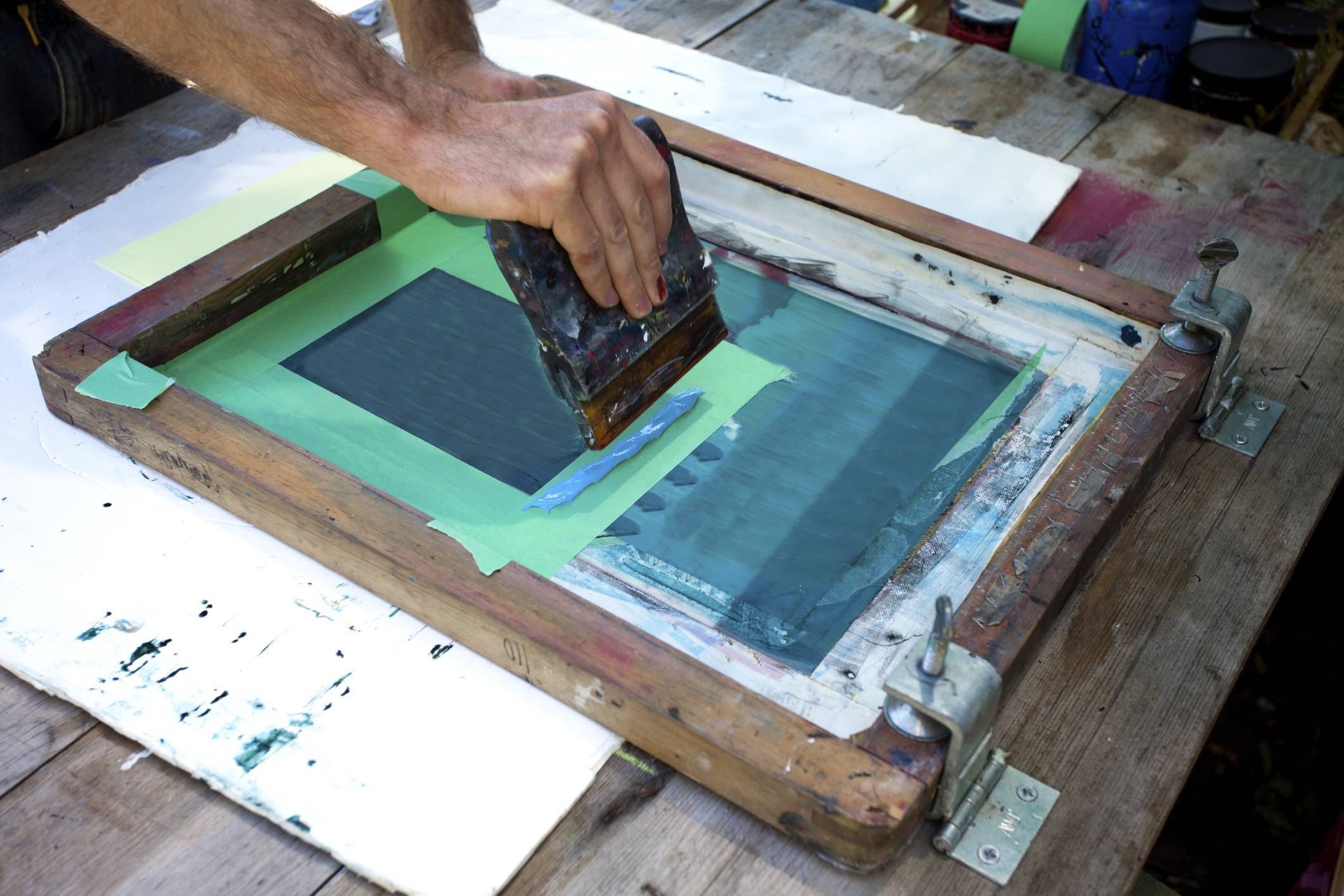ChatGPT said: How 10:9 Design Screen Printing can elevate your team spirit
The Vital Overview to Recognizing Screen Printing and Its Versatile Utilizes
Screen printing has an abundant background that goes back to old times, progressing right into an advanced method utilized throughout numerous sectors today. This guide explores the details of the screen printing procedure, describing its applications in style, advertising, and home style - 10:9 Design LLC Company. Recognizing these basics can open up imaginative capacity for both artistic and business jobs. The adhering to areas will expose crucial pointers and methods to improve one's screen printing ventures
The History of Screen Printing
Screen printing has roots that map back centuries, its development shows the creative and technical advancements of various cultures. Coming from in ancient China, the technique was initially utilized for enhancing textiles and later infect Japan, where it ended up being essential to Ukiyo-e woodblock printing. The method shifted to Europe in the 18th century, where it obtained appeal among craftsmens and industrial printers. The creation of photo solution in the 20th century revolutionized screen printing, permitting even more elaborate styles and better performance. Musicians like Andy Warhol even more propelled its appeal, utilizing the medium to develop famous jobs that combined commercialism and art. By the late 20th century, screen printing had established itself as a functional strategy, employed in fashion, advertising and marketing, and fine art. Today, it proceeds to evolve, integrating electronic modern technology and increasing its applications throughout numerous sectors.
The Screen Printing Refine Explained
Screen printing transforms imaginative visions into substantial styles with a series of specific actions. A picture is created and then transferred onto a screen, normally made of fine mesh textile stretched over a frame. A light-sensitive solution is put on the screen, which is exposed to light, setting in locations not covered by the picture. After rinsing the unhardened emulsion, a stencil is formed.
Next, the screen is put over the substratum, whether it be fabric, paper, or one more material. Ink is then pressed through the open areas of the pattern using a squeegee, transferring the layout onto the substrate listed below. This process can be duplicated for multiple shades, requiring separate screens for every color. The printed product is treated utilizing warm to ensure the ink adheres properly, resulting in a long lasting, vibrant layout all set for usage.
Kinds Of Screen Printing Techniques

Additionally, specialty methods, such as discharge screen printing, eliminate color from the fabric to create softer prints, while foil screen printing uses metal aluminum foil to attain a glossy surface (10:9 Design Abilene). Each technique offers unique features, satisfying various innovative needs and production ranges, inevitably broadening the possibilities within the screen printing domain
Applications of Screen Printing in Different Industries

In addition, the signage and advertising and marketing fields use screen printing for developing appealing display screens and banners. This method permits for strong colors and detailed designs that catch focus. In electronic devices, screen printing is employed for applying conductive inks to circuit card, essential for part links. The home décor industry accepts screen printing to generate distinctive layouts on textiles and wall surface art. Generally, screen printing works as a critical device across diverse fields, improving items with individualized and visually enticing graphics.
Tips for Effective Screen Printing Projects
While taking on a screen printing project, cautious attention to detail can considerably improve the last result. Picking top notch materials is essential; this consists of the screen, inks, and substratums. Using proper mesh matters can impact ink deposition and information resolution. Preparation is similarly crucial; detailed cleaning of displays and correct exposure times assure crisp prints.
Next, exact registration is essential for multi-color prints. Using placement devices can aid accomplish specific layering. Additionally, testing prints on scrap materials prior to production assists recognize prospective issues without throwing away resources.

Often Asked Questions
What Products Are Ideal for Screen Printing on Material?
Cotton and polyester blends are ideal for screen printing on fabric as a result of their toughness and ink absorption. Additionally, specialized textiles like silk or canvas can generate unique structures and finishes, enhancing the general design high quality.
How Do I Clean and Maintain Screen Printing Devices?
To keep and clean up screen printing tools, one ought to regularly clean screens with ideal solvents, check mops for wear, lube relocating components, and store all things in a completely dry, dust-free atmosphere to prolong their lifespan.
What Are the Environmental Impacts of Screen Printing?
Screen printing can have significant environmental effects, including chemical waste from solvents and inks, water usage throughout cleansing procedures, and energy consumption. Sustainable methods and environmentally friendly products are vital for reducing these negative impacts.
Can Screen Printing Be Done at Home Successfully?
Screen printing can be properly done at home with the appropriate materials and strategies. Hobbyists can create quality prints, though success relies on their ability degree, devices, and understanding of the process included.
What Are the Costs Linked With Starting a Display Printing Service?

Beginning a screen printing service includes costs for tools, materials, and work area. Preliminary expenses commonly range from a couple of hundred to several thousand dollars, relying on the scale, high quality of equipment, and wanted production capability.
Screen printing has an abundant background that dates back to ancient times, evolving into a sophisticated strategy used across various industries today. One more technique, rotary screen printing, uses round displays, assisting in continual printing on fabric rolls, thereby enhancing effectiveness for large manufacturings. Furthermore, specialty methods, such as discharge screen printing, get rid of color from the fabric to produce softer prints, while aluminum foil screen printing applies metallic foil to achieve a glossy surface. In the style market, screen printing is commonly used to produce vivid layouts on garments, allowing brands to display their distinct designs. Cotton and polyester blends are excellent for screen printing on textile due to their sturdiness and ink absorption.